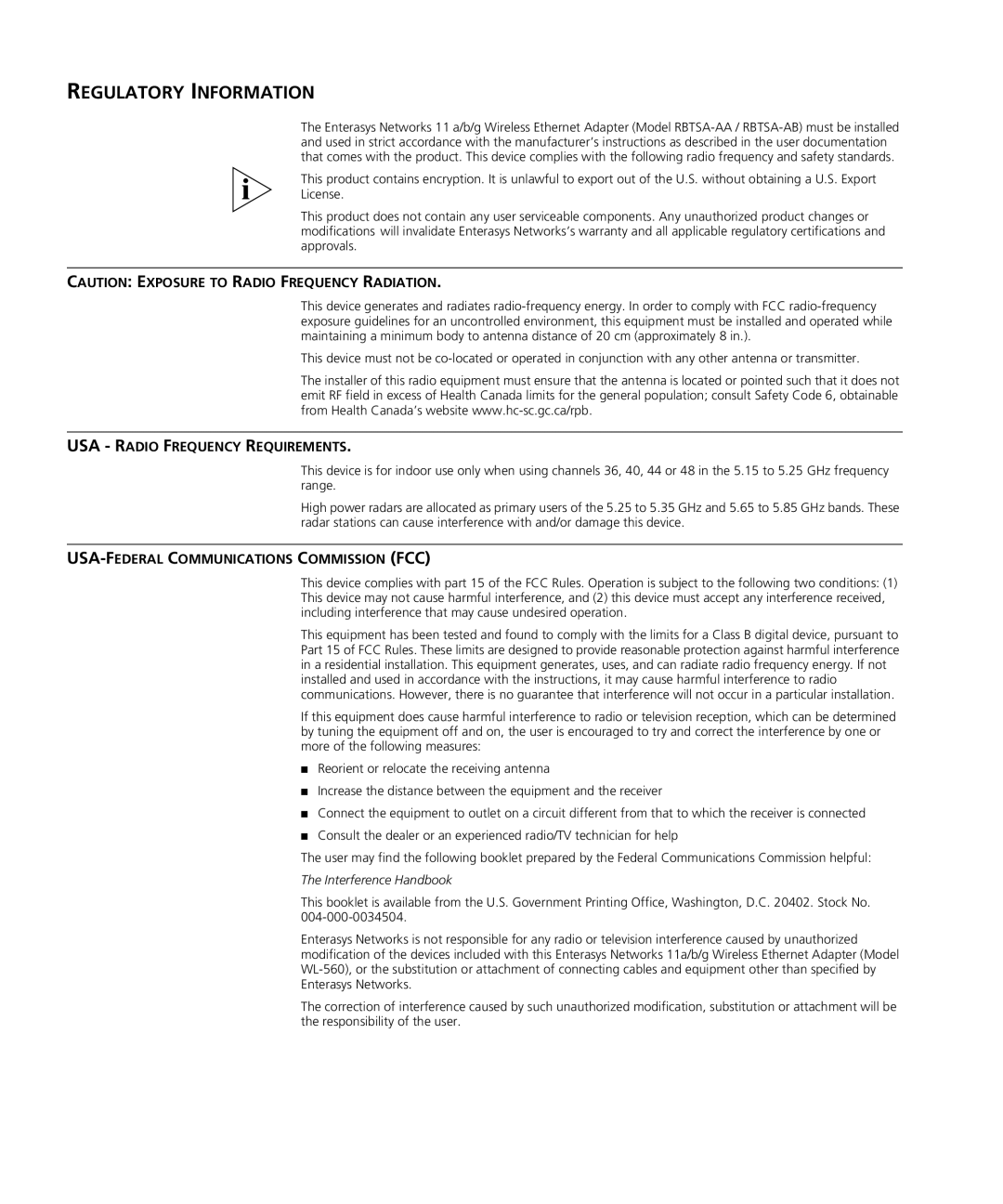
REGULATORY INFORMATION
The Enterasys Networks 11 a/b/g Wireless Ethernet Adapter (Model
This product contains encryption. It is unlawful to export out of the U.S. without obtaining a U.S. Export
License.
This product does not contain any user serviceable components. Any unauthorized product changes or modifications will invalidate Enterasys Networks’s warranty and all applicable regulatory certifications and approvals.
CAUTION: EXPOSURE TO RADIO FREQUENCY RADIATION.
This device generates and radiates
This device must not be
The installer of this radio equipment must ensure that the antenna is located or pointed such that it does not emit RF field in excess of Health Canada limits for the general population; consult Safety Code 6, obtainable from Health Canada’s website
USA - RADIO FREQUENCY REQUIREMENTS.
This device is for indoor use only when using channels 36, 40, 44 or 48 in the 5.15 to 5.25 GHz frequency range.
High power radars are allocated as primary users of the 5.25 to 5.35 GHz and 5.65 to 5.85 GHz bands. These radar stations can cause interference with and/or damage this device.
USA-FEDERAL COMMUNICATIONS COMMISSION (FCC)
This device complies with part 15 of the FCC Rules. Operation is subject to the following two conditions: (1) This device may not cause harmful interference, and (2) this device must accept any interference received, including interference that may cause undesired operation.
This equipment has been tested and found to comply with the limits for a Class B digital device, pursuant to Part 15 of FCC Rules. These limits are designed to provide reasonable protection against harmful interference in a residential installation. This equipment generates, uses, and can radiate radio frequency energy. If not installed and used in accordance with the instructions, it may cause harmful interference to radio communications. However, there is no guarantee that interference will not occur in a particular installation.
If this equipment does cause harmful interference to radio or television reception, which can be determined by tuning the equipment off and on, the user is encouraged to try and correct the interference by one or more of the following measures:
■Reorient or relocate the receiving antenna
■Increase the distance between the equipment and the receiver
■Connect the equipment to outlet on a circuit different from that to which the receiver is connected
■Consult the dealer or an experienced radio/TV technician for help
The user may find the following booklet prepared by the Federal Communications Commission helpful:
The Interference Handbook
This booklet is available from the U.S. Government Printing Office, Washington, D.C. 20402. Stock No.
Enterasys Networks is not responsible for any radio or television interference caused by unauthorized modification of the devices included with this Enterasys Networks 11a/b/g Wireless Ethernet Adapter (Model
The correction of interference caused by such unauthorized modification, substitution or attachment will be the responsibility of the user.
